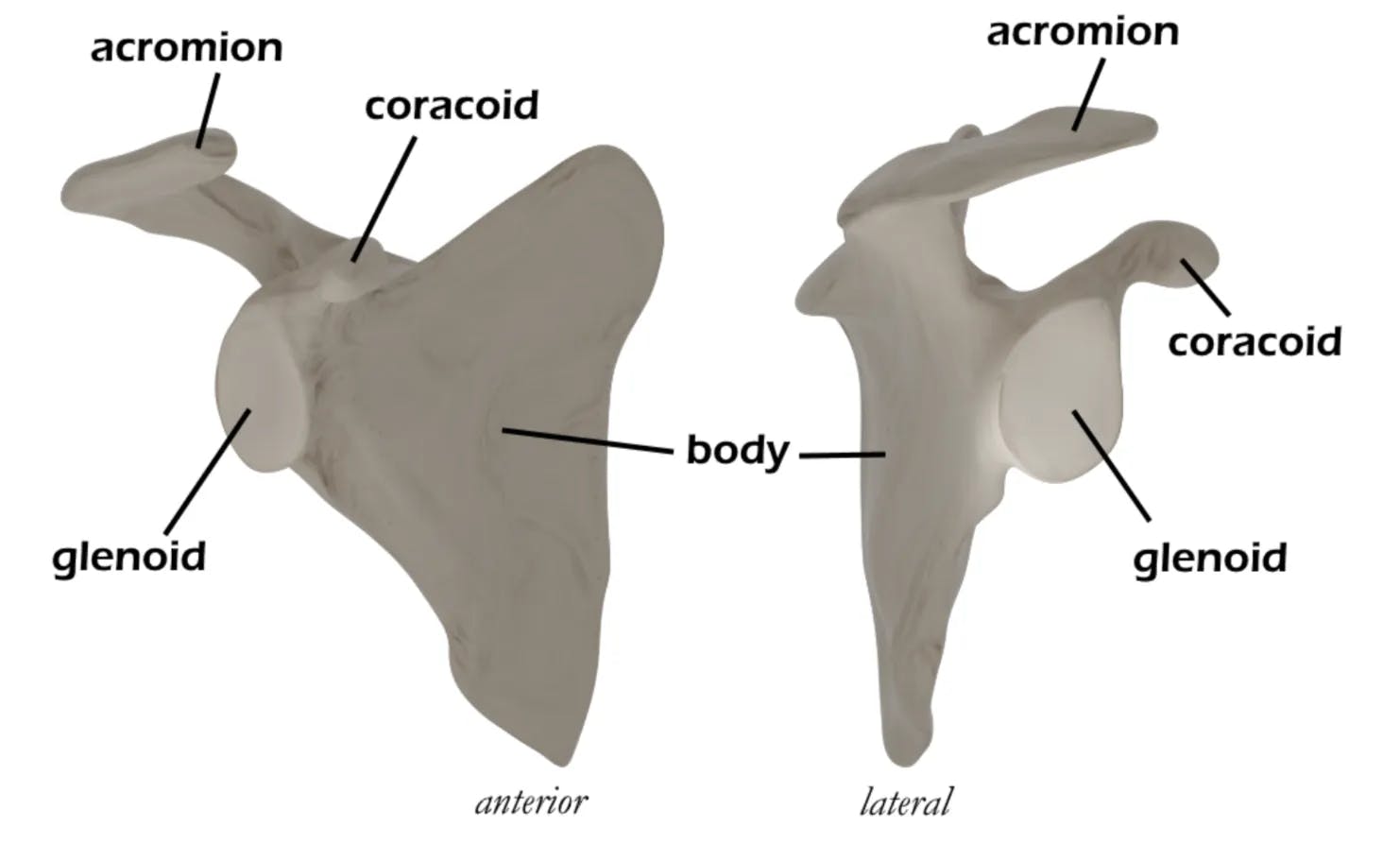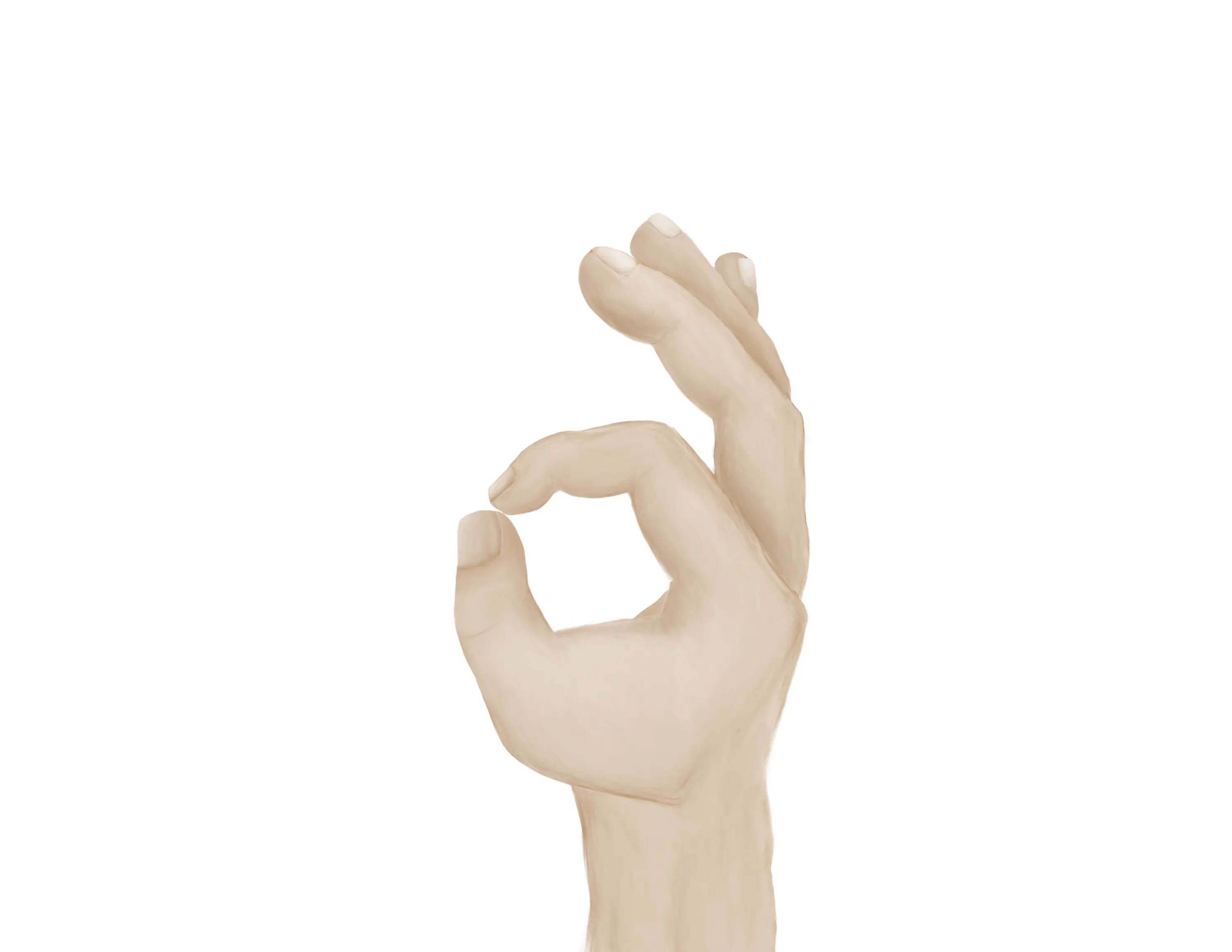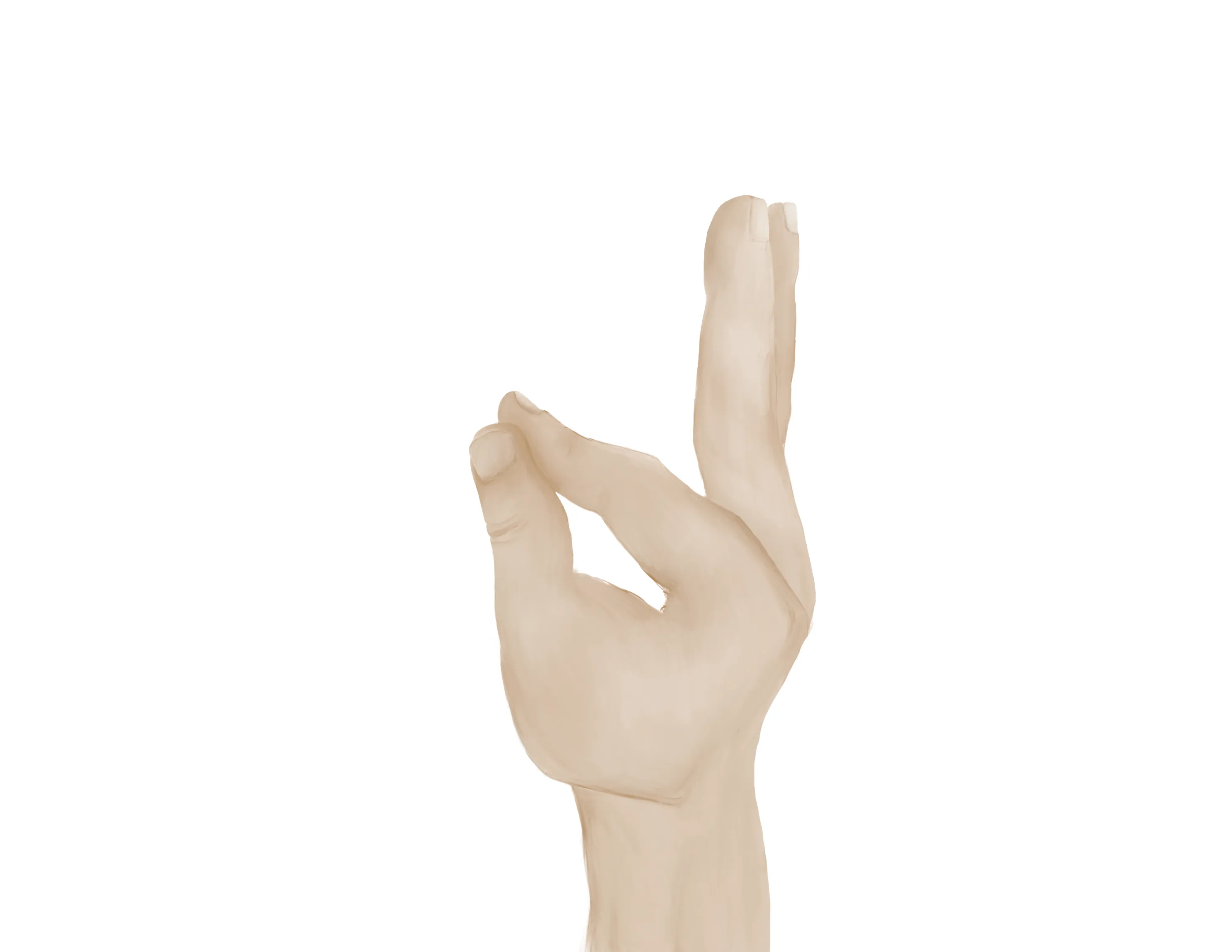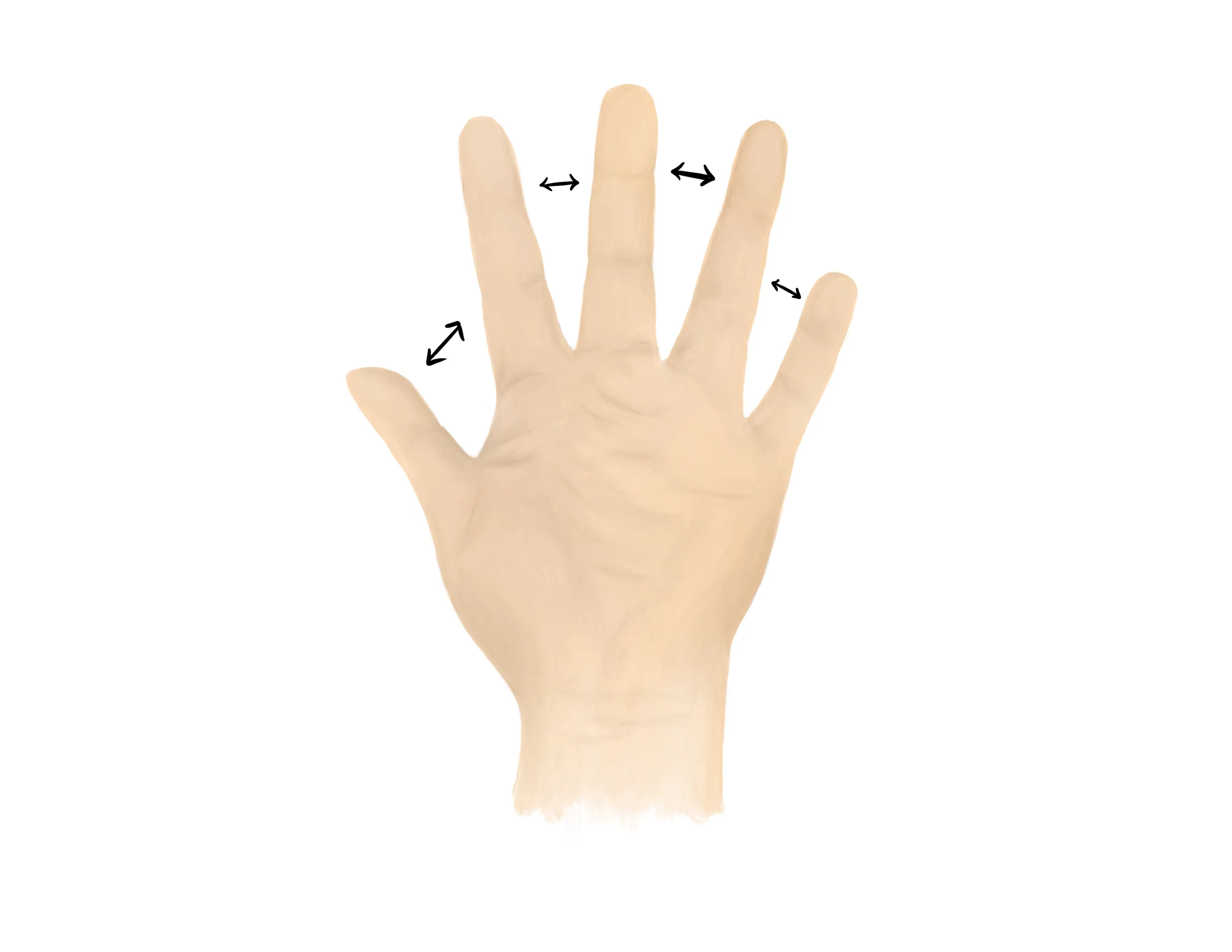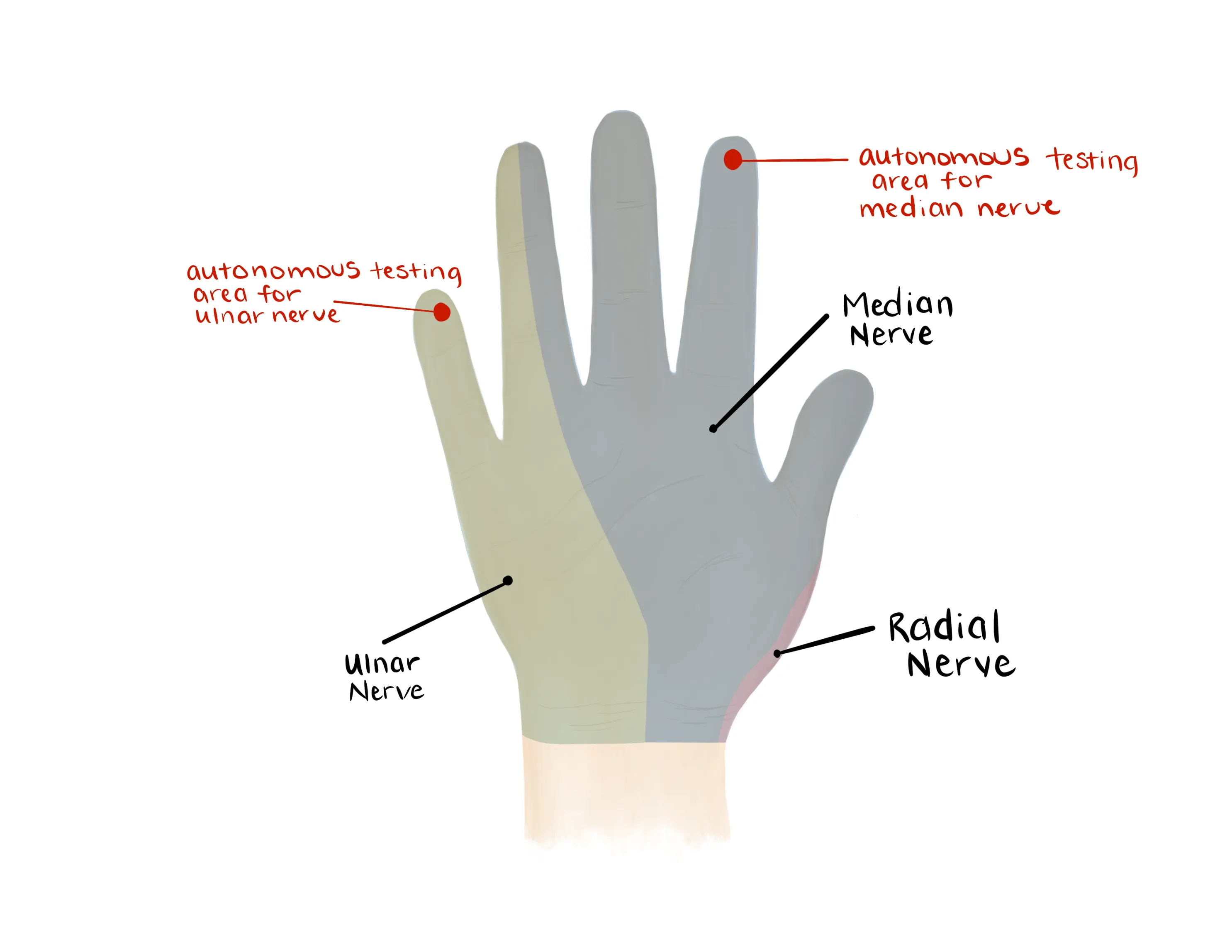Scapula Fracture
- Mechanism
- Usually a high energy mechanism
- Timing of injury
- Other locations of pain
- High energy trauma is frequently associated with other injuries
- Fractures (clavicle, ribs, etc)
- Pneumothorax or pulmonary contusion
- Neurovascular injury (brachial plexus, subclavian artery, etc)
- Cervical or thoracic spine injury
- Numbness/tingling
- Hand dominance
- Profession
Vitals
- Soft tissue defect/poke hole that probes to fracture = open fracture
- Small poke hole wound near the fracture site with a slow, continuous ooze is indicative of an open fracture
- Do not miss this and confirm antibiotics were given
- May observe focal swelling and deformities
- Palpate upper and lower extremities to identify other tender locations
- Thorough secondary exam to prevent missed injuries
Motor Exam:
- Median Nerve/ Anterior interosseous nerve (AIN)
- Opposition of the thumb
- Opponens innervated by the median nerve - helpful to assess if concern for acute carpal tunnel syndrome
- Flexion of wrist, fingers, thumb
- “A-OK sign” = AIN
- Tests flexion of thumb IP joint (FPL) and flexion of index DIP joint (FDP)
- Radial nerve/ Posterior interosseous nerve (PIN)
-

- Extension of wrist, fingers, thumb
- Radial nerve palsy is common seen in humeral shaft fractures especially midshaft and distal third
- “Thumbs up” = PIN
- Tests extension of thumb IP and MCP joints (EPL))
- Palm on flat surface and lifting/extending thumb off the surface is also a good test for PIN (tests extension of thumb MCP joint (EPL))
- Ulnar nerve
- Median, Radial, Ulnar nerve distributions
- Radial artery, Ulnar artery
- If having difficulty with palpation of radial artery, find a US doppler
- Pulse decreased - Obtain noninvasive vascular imaging and consult vascular surgery if abnormal
- Capillary refill to digits
- Pain limited active and passive motion at the glenohumeral joint
- AP/scapular Y/axillary lateral vs. velpeau view shoulder
- Axillary lateral vs. Velpeau of shoulder
- Important to rule out concomitant shoulder dislocation which may not always be apparent on AP
- Consider Grashey view if concerned for intraarticular extension
- AP of the glenoid - possible to see fracture line exit into the glenoid
- Patient rotated 35-45 degrees and his or her back (scapular body) up against the imaging detector.
- CT scan - recommended for intraarticular extension or significant displacement
- Useful to understand the fracture pattern and Intra-articular extension
- Often obtained in a trauma setting
- Useful for significant displacement
Medical Decision Making
Closed Scapular Fracture:
*** is a *** y/o ***R/L hand-dominant ***M/F presenting with pain to the ***R/L shoulder which occurred while ***mechanism, found to have a scapular fracture. The patient was neurovascularly intact and had no poke holes or punctate wounds. There was tenderness to palpation about the shoulder girdle and tenderness to palpation ***other locations. Imaging revealed ***. On ***velpeau/axillary lateral the glenohumeral joint was concentrically aligned. The patient was immobilized with a sling and will follow up with orthopedic surgery in a week.
Open Scapula Fracture:
- Consult orthopaedic surgery immediately
- NPO, preop labs (type and screen, INR, aPTT, CBC, BMP)
- Ensure IV antibiotics were given (ancef, gentamicin)
- Gustillo-Anderson chart for antibiotic type and dose
- WB status: Nonweightbearing injured shoulder, remain in sling
- Diet: Regular
- Analgesia: short course of narcotic pain medication, tylenol (scheduled)
- Ex: 5mg oxycodone q4 - 20 pills
- Immobilization
- Sling
- Disposition: Home with follow up in orthopedic surgery clinic in 1 week
Materials for Sling Immobilization
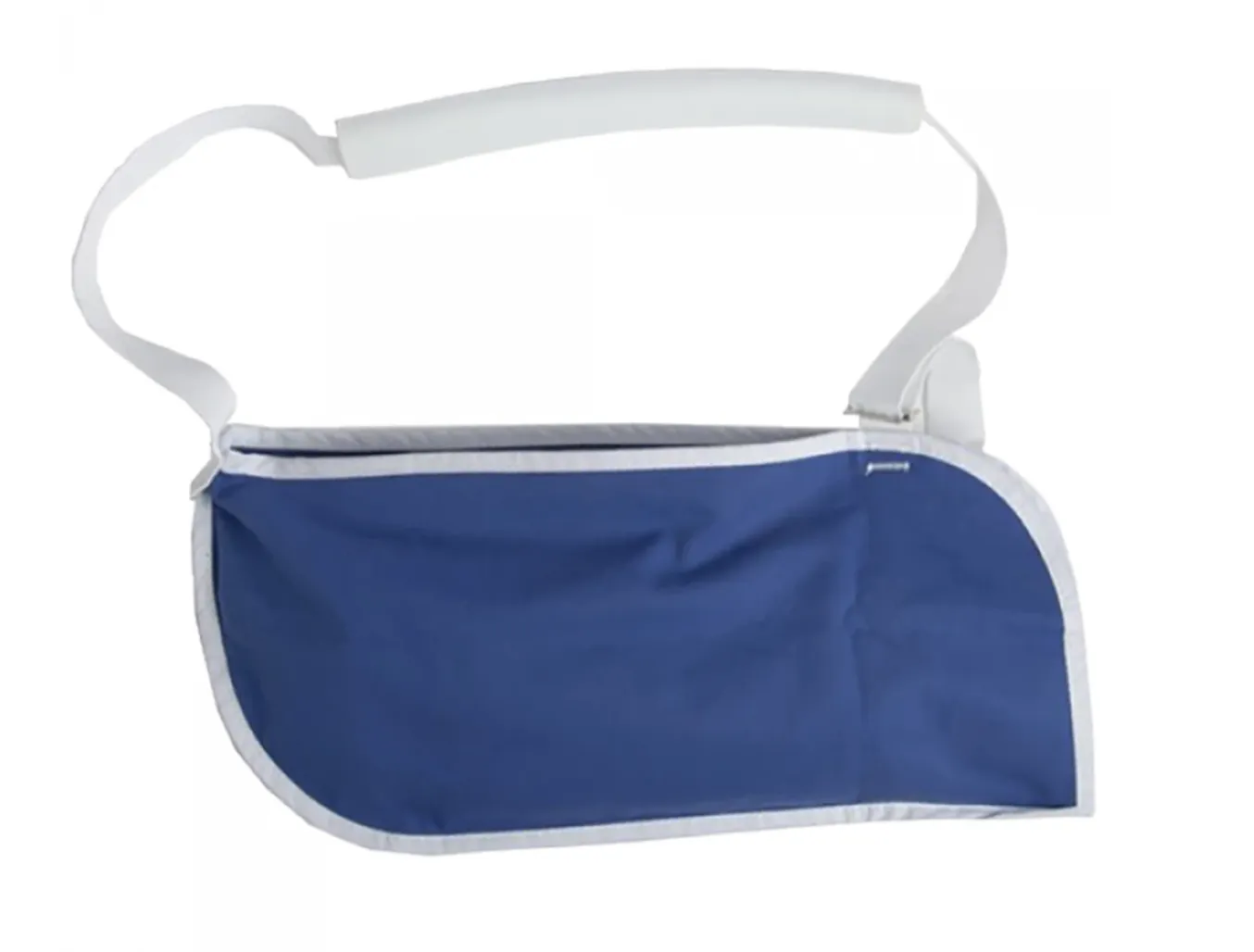
Sling
Procedure Walkthroughs:
- Place sling on the injured arm with large strap around the contralateral trapezius
- Loosen or tighten the strap to ensure the arm is maintained at 90 degrees with the elbow in the closed end of the sling
Procedure Notes:
PROCEDURE NOTE Application of a Velpeau Sling
PRE-PROCEDURE DIAGNOSIS: Scapula Fracture
POST-PROCEDURE DIAGNOSIS: Same (refer above)
PROCEDURALIST: ***
ANESTHESIA: None
NAME OF PROCEDURE: Application of a Velpeau Sling
PROCEDURE IN DETAIL:
The risks and benefits of the procedure were discussed at length with the patient. Risks discussed included but were not limited to post-procedural pain, numbness, and stiffness. Following informed verbal consent after discussion of risks and benefits, the patient agreed to proceed with the procedure. A timeout was performed.
A velpeau splint was applied with the arm in 90 degrees of flexion. The long arm strap was adjusted to fit comfortably on the contralateral trapezius region. After the sling was applied neurovascular status was checked and found to be consistent with baseline.
ESTIMATED BLOOD LOSS: None
COMPLICATIONS: None
DISPOSITION: Discharge from the ED with follow up with orthopedic surgery
PRE-PROCEDURE DIAGNOSIS: Scapula Fracture
POST-PROCEDURE DIAGNOSIS: Same (refer above)
PROCEDURALIST: ***
ANESTHESIA: None
NAME OF PROCEDURE: Application of a Velpeau Sling
PROCEDURE IN DETAIL:
The risks and benefits of the procedure were discussed at length with the patient. Risks discussed included but were not limited to post-procedural pain, numbness, and stiffness. Following informed verbal consent after discussion of risks and benefits, the patient agreed to proceed with the procedure. A timeout was performed.
A velpeau splint was applied with the arm in 90 degrees of flexion. The long arm strap was adjusted to fit comfortably on the contralateral trapezius region. After the sling was applied neurovascular status was checked and found to be consistent with baseline.
ESTIMATED BLOOD LOSS: None
COMPLICATIONS: None
DISPOSITION: Discharge from the ED with follow up with orthopedic surgery
| Common ICD-10 Codes | Brief Description |
|---|---|
| S42.1 | Fracture of scapula |
| S42.11 | Fracture of the body of scapula |
| S42.12 | Fracture of acromial process |
| S42.13 | Fracture of coracoid process |
| S42.14 | Fracture of glenoid cavity of scapula |
| S42.15 | Fracture of neck of scapula |
